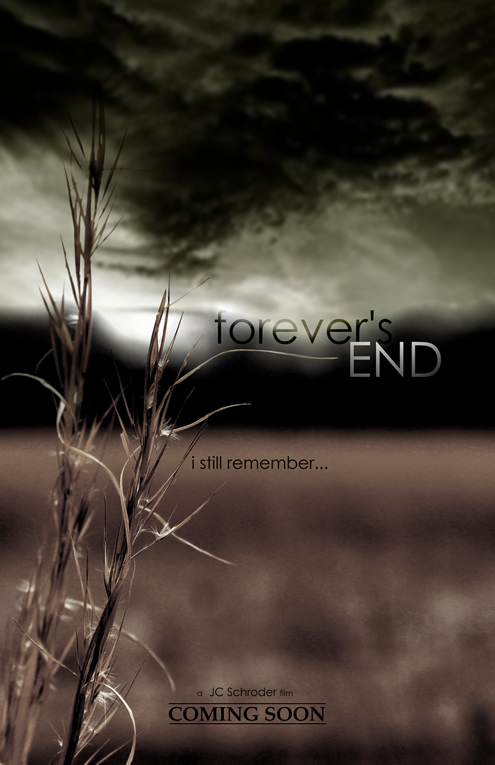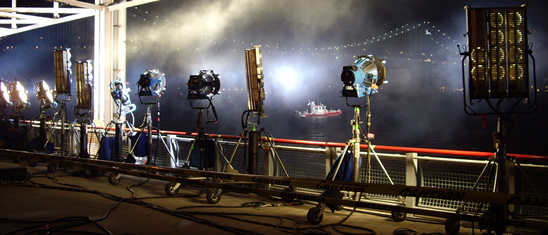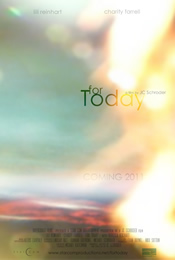Back on December 17, 18, and 19, 2010 I directed a wonderful little short film, titled “For Today”. The film was designed from the start to be simple, dramatic piece with heart– easy to produce, easy to shoot and to just be a very laid-back, fun experience. Basically a little passion project of mine to use as an update to my directing reel, and a pitch project for several other films/shows we already have in the works. And for the most part (and much to my surprise) it ended up being pretty much exactly that. I wrote, produced, shot and directed this project. After coming off of working on big budget movies, studio fare, and producing events, commercials, & features this shoot was so easy to pull together that I nearly had myself convinced that I’d missed something important along the way. As of this writing, we’re almost through Post on the film and still without any major hiccups. Short film or not, no film runs this smoothly… much less one made for almost zero money. This is a truly remarkable film.

--Lili Reinhart in "For Today"--
Conceptualization & Pre-Production:
“For Today” has become a film of “3’s” — Now, to start off here, you need to understand that none of this was planned to be done in 3’s, it just turned out that way. First off, I wrote the entire script on a whim in about 3 hours. I liked it so much I decided I wanted to shoot it a few weeks later. 3 days later, and now on our 3rd and final shooting draft of the script, and after a couple phone calls and e-mails, I had the entire cast and crew set, shoot dates, equipment, hotels, and all but one of the locations (keep in mind this was just a side project, all this came together while I was working on a half dozen other projects).
A few weeks later, I flew in to Cincinnati, Ohio (where my family is located) an extra week before the holidays to shoot the film. I met my two lead actresses, Lili and Charity (for the first time together) the night before our first shoot day to finalize (pre-prepped) wardrobe and one 3-hr rehearsal (honestly, we probably didn’t even need the rehearsal).
The next day was the first of our 3-day shoot at 3 different locations. (If you’re not keeping track of the “3’s” yet I suggest you start).
Principle Photography:
DAY 1 of 3: Let me preempt this section with this statement: It is a WELL known fact in this business that shooting anything always takes twice as long as you plan it to, 12-14 hour days are the norm on most sets. So when I tell you that not only did we start on time on our first day, but we wrapped a hour EARLY, that should tell you the kind of set it was. Day one was shot entirely on location at a wonderfully donated house located just north of Cincinnati in Hamilton, Ohio – the first half of the film was shot in less than 8-hours without incident (including a less than simple Steadicam sequence which looks absolutely fantastic).
A side note on Cast & Crew: Anyone who’s ever worked on a professional set will also tell you that the quality of the finished film is almost always directly related to the mindset and mood on a set. In that respect, “For Today” was a dream. We shot the entire film with 3 Cast and 3 Crew (including myself), all unpaid, donating their time to the project and I’ve never seen a shoot go this smoothly. A HUGE shoutout to my amazing crew: Nikk Sutton (Co-Producer/Steadicam Op/++) and Brian Burkhard (our do-everything PA/boom op/grip etc etc) and our incredibly awesome cast: Lili Reinhart (and her mother Amy – who drove down 8 hours in the snow the weekend before Christmas for the 3-day shoot), the impeccably dependable and wonderful Charity Farrell, and our great newcomer Rebecca Richart.
DAY 2 of 3: This was by far the most complex of all our shoot days, mainly due to three factors: #1 Weather: It was sub-zero, shooting in 4 inches of snow outside all day (my boots were soaking wet after the first hour) with actors in light jackets/wardrobe that was less than “full winter gear” – requires frequent breaks, it’s a bit difficult for actors to act while quickly becoming ice-cubes, and equipment rarely acts as it’s supposed to #2 Location: We were shooting in a public park on the river – limited access to power, no warm staging area (we left several vans running all day with the heat on full for warming up) #3 Length: We had both day and night shots to get, so we were literally there all day and into the night, the day went on even longer due to the need for frequent breaks to warm up our cast and crew so we could all continue to function.
And one last technical note here: most cameras (specifically lenses) do not respond well to extreme changes in temperature. We were lucky enough to be using a camera that handles cold temperatures well, but there’s always the concern that the interior of a lens will fog up, then freeze. – Too avoid this, we were extremely careful while handling the camera, not just during filming, but all day, on set… the camera (and lens) was intentionally left in its case, out in the cold for several hours prior to filming, allowing it to adjust to the cold weather slowly (avoid fogging/condensation in the lens), then keeping it out in the cold (or during rests/breaks, intentionally placing it in the back of a van with windows open – ie: at the outside temp– to avoid it from fogging throughout the day). This was critical for cold-weather shooting, as a simple thing like breathing onto the lens could fog it up, and freeze almost instantly… and we didn’t exactly have the funds for multiple camera systems should it freeze… we would have just been stuck, waiting for hours hoping there’s no permanent damage. Lucky for us, we were extremely careful, and this didn’t happen… but it was a very important note in our daily planning process which was thought through in pre-production (even the early arrival time of the camera on set each morning… driven to set in a vehicle intentionally left COLD -but insulated- to allow it to accommodate to the weather).
But back to Day 2 here: The fact is, regardless of the difficulties posed, we still got everything we needed, and what we shot looks absolutely fantastic.

--Charity Farrell in "For Today"--
DAY 3 of 3: Our last day was by far our simplest, but that was no accident, planning makes all the difference. On day three we only had one, half-page scene to shoot and a bunch of pickups for various transition moments in the film. Even though most of the day was outside, we were so quick at it (as a team, we just had it down—that and there was honestly not that much left to shoot), and by that time we were so accustomed to the weather from the day before, that the day just flew by. By far one of the most exciting moments for me, was filming some specific pickups for a short driving sequence in the film. We just simply didn’t have a real camera truck at our disposal, so, as we always do in film, we improvised. I wanted some specific shots of a car (with our characters in it) driving in the city/over a bridge, etc.. so I sat in the back of an SUV, rear window flipped open, with our (rather large) camera mounted on my shoulder, and we had our character’s vehicle follow us. If you’ve ever ridden in the back of a van with no seatbelt on a bumpy/less than level road, through unpredictable city traffic, turning corners and stopping at stop lights you’ll know exactly what I mean by “exciting”… only now think about doing it with a huge (very expensive) camera on your shoulder, hanging out a rear window with both hands occupied trying to zoom and focus on a moving vehicle following you, while looking through an eye-piece… yeah, it was a blast!
That said, we got what we needed, and were still so far ahead of schedule, that I decided to take everyone out to a sit-down restaurant for lunch that day… even with the extended break, we still wrapped almost two hours EARLY. Yeah… it was a good day.
All that said, “FOR TODAY” is now officially in the can. And get this: over the course of the 3 days, we shot almost six hours worth of footage (for a 10 minute film – for anyone doing the math, that’s a shoot ratio of 36:1.. the average non-action film aims for 4:1, yeah, and we were shooting with ONE camera) and, over the 3 days we were only on set for almost exactly 33 hours (this is not a joke). We’re now in post on the project and I’m loving every minute of it!
One last note to all you new or would-be filmmakers out there: This shoot was extremely thought through in every detail nearly two months in advance. As a rule, the more work done/better organized a film is in pre-production the smoother it runs. It is also no accident that the first and last days of the shoot where the easiest.. it was intentionally scheduled that way. If your cast/crew get overworked/frustrated day one, they aren’t likely to remain happy/stick with you the longer the shoot goes. Likewise, the last day being intentionally easy leaves the cast/crew walking away happy and energetic with a sense of accomplishment. Even if you’ve had some hard days there in the middle, how a shoot begins and ends is extremely important, it’s what people remember the most – organization and extremely detailed planning is key to any successful film… don’t “hope” it works out that way, PLAN IT that way. (A shoutout here is also due to the Cinci Film Commission for all their help, and Garfield Suites for the wonderful rooms!)
Ok… so, at the start of this (rather long) post, I said that this film ended up being a film of “3’s”, if you weren’t keeping track, let me recap those for you: “For Today” was written in 3-hours, went through 3-drafts over 3-days with one 3-hour rehearsal–the film was shot with 3-cast and 3-crew at 3-locations over a 3-day period totaling 33 hours of shoot time. I’d say that’s pretty freaking awesome.
Tags: Films, For Today by admin
No Comments »






